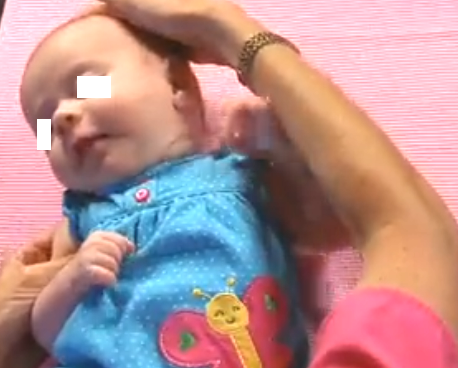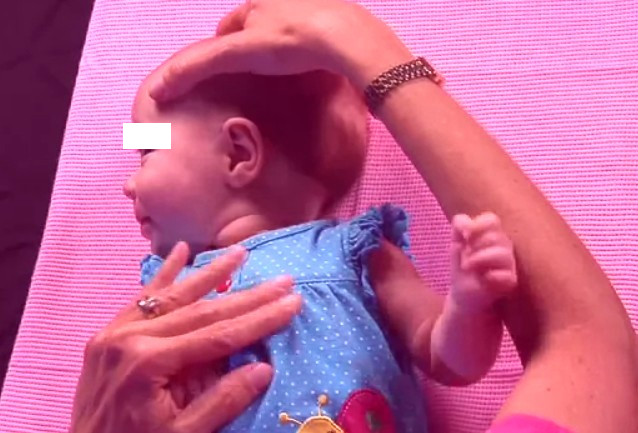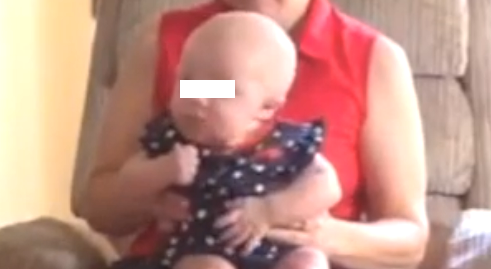Also referred to as wryneck, torticollis is a condition characterized by tilting of the head. Torticollis is a Latin word meaning ‘twisted neck.’ People may wake up with a case of torticollis after sleeping uncomfortably. Newborns may suffer from the condition due to a difficult delivery or because of its position in the womb. It is referred to as congenital muscular torticollis or infant torticollis.
Parents may get distressed to see their baby with a tilted head or experiencing difficulties in turning its head. However, most infants affected by torticollis do not feel any pain. Also, it is easy to resolve the condition via simple stretching exercises or position changes that can be carried out at home.
Symptoms of torticollis in infants
Infants with torticollis will behave just like any other normal baby, with the exception of activities that include head turning. Some of the signs and symptoms of torticollis in infants are listed below:
- Affected babies will favor looking at people over a single shoulder, instead of turning their heads to follow them with their eyes.
- The head is perennially tilted in one side. This is quite difficult to spot in newborns.
- The babies will spend additional energy to turn towards people and become irritated when they are unable to completely turn their heads.
- Breastfed babies may favor just one breast as it will experience problems turning to the other side
- Affected infants may develop a tiny bump or lump in the neck, similar to a tensed muscle knot.
- A few infants with torticollis may also elicit positional plagiocephaly or a flat head on one or both sides, because of always facing in one direction only.
Causes of torticollis in infants
Torticollis in infants or newborns is quite common. Both girls and boys are at equal risk to developing the condition. It can be a congenital disorder or occur gradually over 3 months.
The precise cause of torticollis in infants is not known. Researchers are of the opinion that the condition may be linked to cramping of the fetus within the womb, or anomalous positioning, such as the breech position wherein the buttocks or feet of the baby first exit the birth canal.The use of vacuum gadgets or forceps during delivery also increases the vulnerability of the infant to developing torticollis.
The above factors exert pressure on the SCM or sternocleidomastoid muscle of the newborn. The SCM is the big, rope-like muscle that occurs along either sides of the neck from the collarbone to the back of the ears. Additional pressure on one side of SCM can result in its tightening, thereby causing problems in turning the neck.
Some infants with torticollis may also suffer from another condition called developmental dysplasia of the hip, which is also caused due to a difficult delivery or abnormal womb positioning.
Diagnosis of torticollis in infants
A doctor will check the extent to which the baby can turn its neck or tilt the head. In case infant torticollis is diagnosed, then the doctor will teach stretching exercises to parents which will help strengthen the unused side of neck as well as loosen the SCM. Certain cases may require intensive treatment by a physical therapist. It is necessary to go for regular checkups till the issue resolves.
Babies younger than 6 weeks and with an unstable hip are also checked for developmental dysplasia of the hip via an ultrasound.
Treatment of torticollis in infants
The best method to treat torticollis in infants is by encouraging affected babies to turn their heads in both directions. It will help tighten the loose neck muscles and loosen the tensed ones. Parents need not worry as it is not possible for infants to hurt themselves when trying to turn their heads on their own.
Parents can try out the below listed simple exercises to treat torticollis in infants:
- When newborns want to feed, then offer the breast or bottle in a manner that encourages the baby to turn away from the preferred side.
- Catch the infants’ attention with sounds and toys during play and make them turn their heads in both directions.
- Babies like to look out into open spaces. Hence, parents can put them to sleep facing towards the wall. This will make the baby turn its head into the open side of the room. Remember to place the baby on its back when sleeping so as to reduce the risk to SIDS.
- Place the baby on its stomach on your lap when it is awake for 5 to 10 minutes at a time. Sing or talk to the baby so that it turns the head in either directions. This will help strengthen the shoulder and neck muscles.
If stretching exercises do not help improve the symptoms of torticollis in infants, then the doctor may perform a muscle-release surgery to cure the condition.
Torticollis in infants normally takes about 6 months to get completely cured. Some affected babies may take a year or even longer.
Torticollis in Infants pictures



